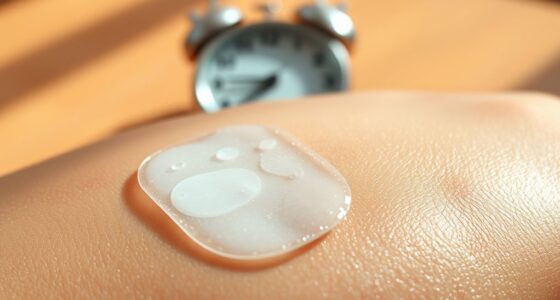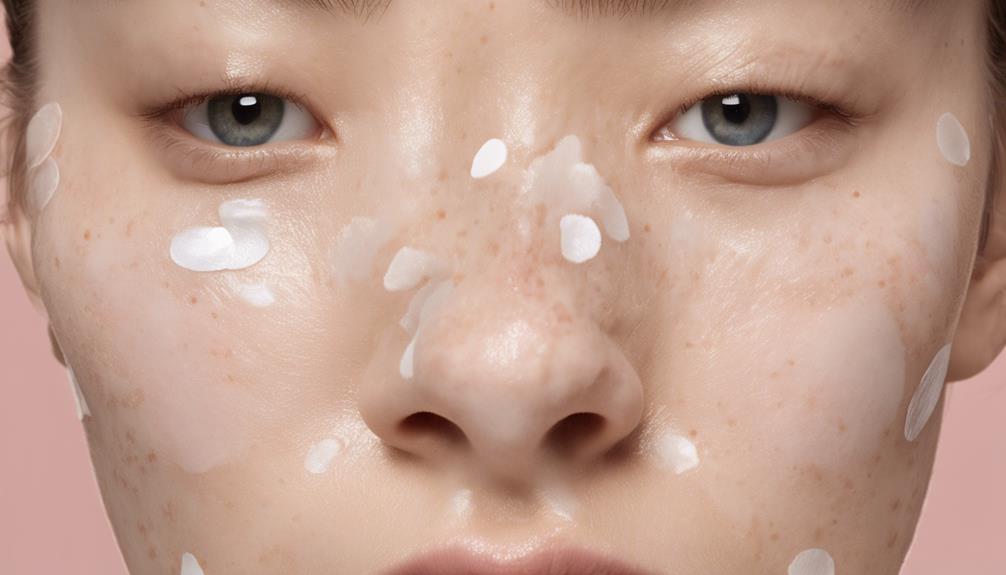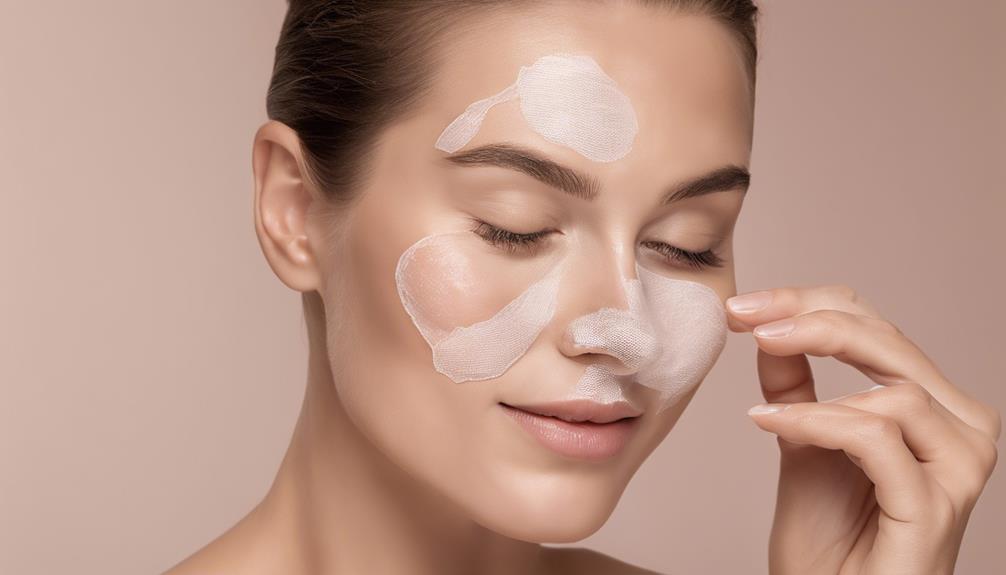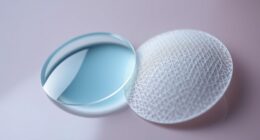Pimple patches can help reduce the appearance of unpopped pimples, but they mostly work on surface-level acne. These hydrocolloid patches absorb excess fluid and promote healing while creating a protective barrier. However, if you're dealing with deep, cystic acne, you may find them less effective. For the best results, it's often recommended to combine patches with other treatments. You might discover what types of patches offer the most benefits for your skin concerns.
Key Takeaways
- Pimple patches effectively target surface-level acne but are less effective on deep, unpopped pimples like cystic acne.
- They absorb excess fluid and impurities, promoting healing for unpopped pimples that are close to the surface.
- The hydrocolloid material creates a moist environment, aiding in faster skin repair for blemishes.
- Medicated patches with active ingredients can enhance treatment, but they may not penetrate deeply enough for cysts.
- While they reduce redness temporarily, they do not equate to actual healing of deeper acne issues.
Understanding Pimple Patches
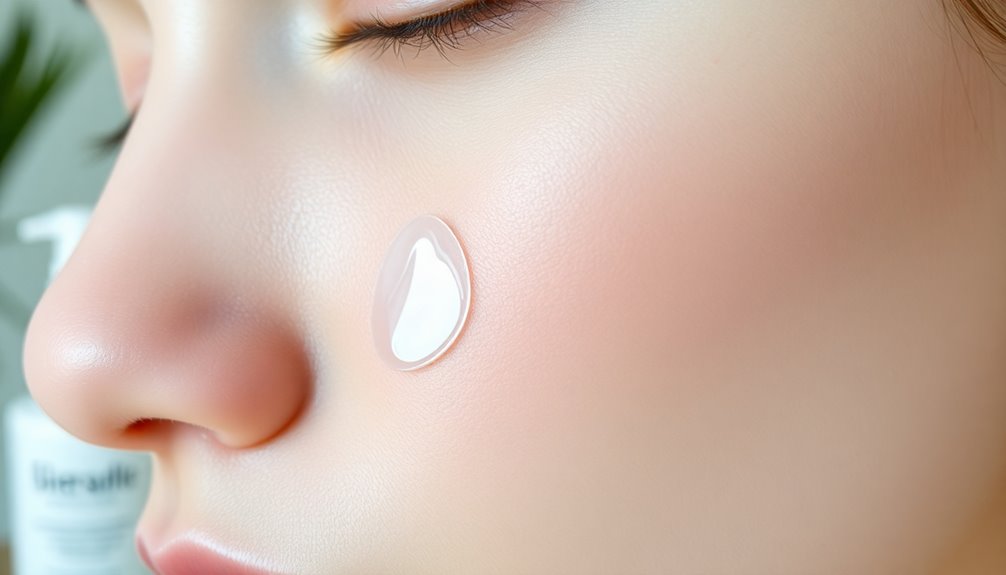
When you're dealing with unpopped pimples, understanding pimple patches can be a game changer.
These patches, usually made from hydrocolloid, absorb fluids and promote healing. They're discreet enough to wear under makeup, making them perfect for daily use. Many patches contain active ingredients like salicylic acid and tea tree oil, which help treat acne effectively. Most are non-irritating, but if you have sensitive skin, you might experience reactions, especially with added ingredients.
Hydrocolloid patches absorb fluids and promote healing, making them perfect for discreet daily wear under makeup.
You can wear them overnight or during the day, providing a protective barrier against irritants. By choosing the right type of patch, you can target your specific needs, whether it's reducing inflammation or combating bacteria. Additionally, the key active components in these patches work specifically to address the needs of different types of acne.
How Pimple Patches Work on Unpopped Pimples

Pimple patches work effectively on unpopped pimples by utilizing a combination of absorption and moisture retention. They absorb excess fluid and impurities, creating a moist environment that promotes faster skin repair. This not only reduces redness and swelling but also protects your skin from external irritants and prevents you from picking at the blemish. Additionally, hydrocolloid patches are specifically designed to create a gel-like barrier that aids in healing and prevents infection.
| Benefits | Limitations |
|---|---|
| Reduces inflammation | Limited absorption |
| Shields from bacteria | Surface-level treatment |
| Non-invasive and discreet | Temporary relief |
Types of Pimple Patches Available
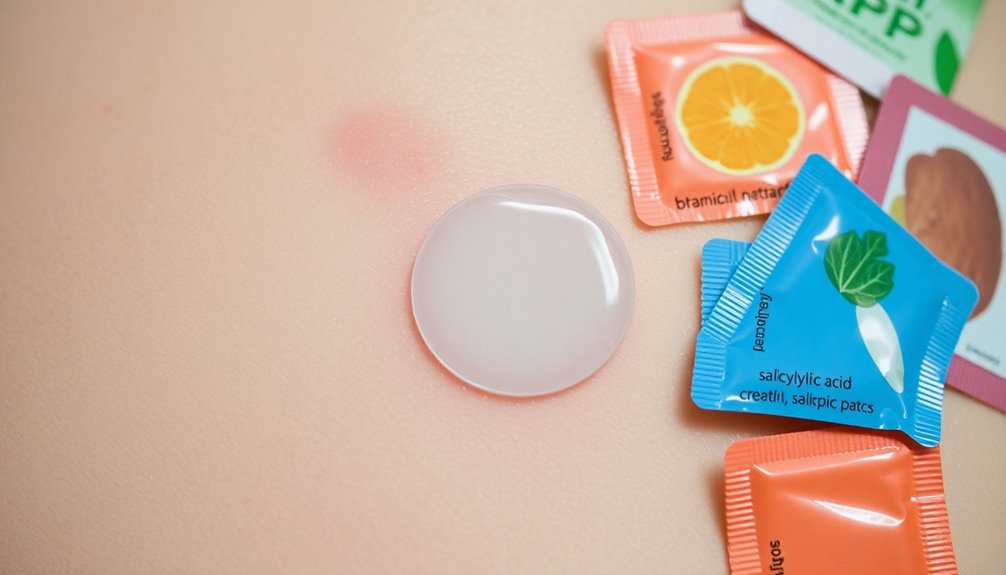
After understanding how pimple patches work on unpopped pimples, it's important to explore the various types available on the market.
You'll find hydrocolloid patches that absorb fluid and bacteria, perfect for surface-level acne. These patches are particularly effective because they utilize hydrocolloid healing to create a moist environment for skin repair. Many users appreciate their ability to reduce inflammation significantly, enhancing the healing process.
Medicated patches contain ingredients like salicylic acid or tea tree oil, boosting their acne-fighting power.
For deeper cystic acne, microneedle patches deliver active ingredients using tiny needles.
Moisturizing patches with hyaluronic acid hydrate your skin while treating breakouts.
Ultimately, protective patches act as a barrier, preventing picking and contamination.
Each type serves a unique purpose, so choose the one that fits your specific needs for the best results.
Benefits of Using Pimple Patches
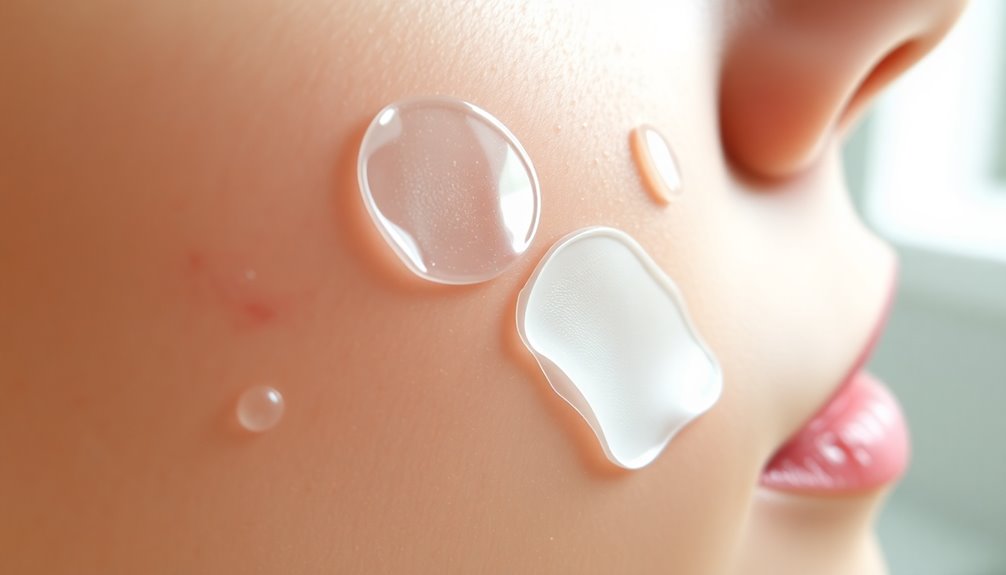
Using pimple patches can dramatically enhance your skincare routine, especially for unpopped pimples. These small, convenient patches offer several benefits. They reduce inflammation, shield your skin from dirt, and prevent you from picking at blemishes. With a moist environment, they speed up healing while minimizing the risk of scarring. This is possible because pimple patches are often made of hydrocolloid material, which absorbs fluid and promotes faster recovery.
Here's a quick look at their benefits:
| Benefit | Description |
|---|---|
| Reduces Inflammation | Soothes redness and swelling |
| Prevents Contamination | Shields from dirt and bacteria |
| Speeds Healing | Promotes faster skin repair |
Their discreet appearance means you can wear them under makeup, making them perfect for daily use. Pimple patches are a simple yet effective addition to your skincare arsenal!
Limitations of Pimple Patches
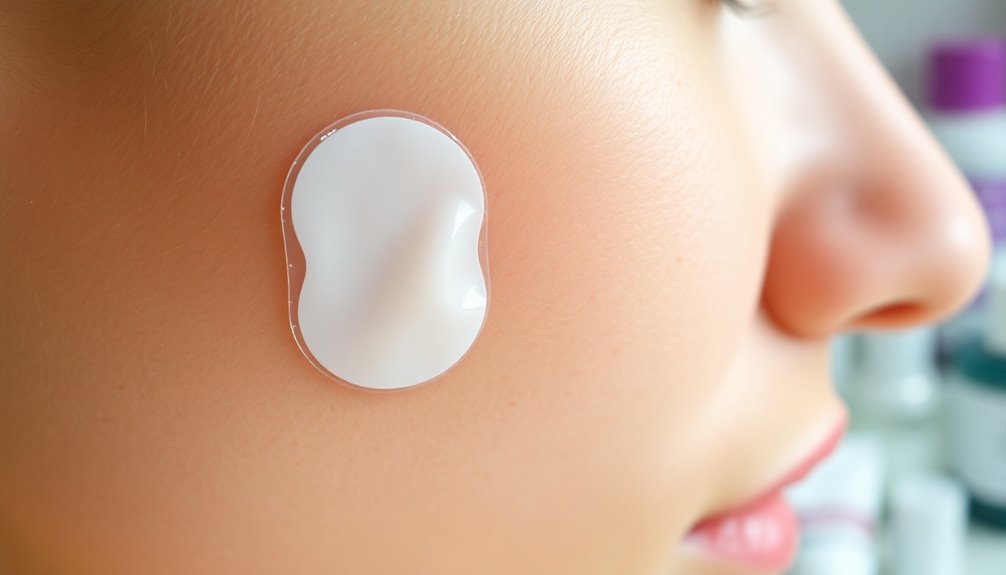
While pimple patches can be handy, they won't work wonders for deep acne like cystic bumps. Additionally, hydrocolloid patches are effective primarily on open lesions, making them less suitable for deeper pimples. Plus, if you have sensitive skin or allergies, the ingredients in these patches might cause irritation instead of relief. It's essential to understand these limitations before relying solely on patches for your skincare needs.
Deep Acne Ineffectiveness
Although pimple patches offer convenience for treating acne, they fall short when it comes to deep, unpopped pimples. These patches primarily target surface-level acne, lacking the penetration needed for cystic or nodular types. If you apply a patch on a deep pimple, you might find it doesn't absorb enough fluid, leading to disappointment. While they may soothe discomfort, they won't speed up healing for deeper issues. Additionally, their temporary reduction in redness does not equate to actual healing of cystic acne.
| Benefits | Limitations |
|---|---|
| Soothes irritation | Ineffective on deep acne |
| Protects from dirt | Limited penetration |
| Reduces redness | Temporary relief only |
| Prevents picking | May irritate skin |
Ingredient Sensitivity Issues
Pimple patches can be a quick fix for surface-level acne, but ingredient sensitivity issues can complicate their effectiveness and safety for some users. If you have dry or sensitive skin, patches with salicylic acid or tea tree oil might irritate rather than help. Benzoyl peroxide can also lead to irritation, especially if you've had sensitivity before. While hyaluronic acid hydrates and niacinamide improves skin tone, neither addresses sensitivity directly. Always patch test new products to avoid reactions, and opt for gentle ingredients. Hydrocolloid is the main ingredient in pimple patches, which helps absorb fluid and promote healing while minimizing irritation. Avoiding harsh actives and using hydrocolloid-only patches can minimize irritation. Consulting a dermatologist for personalized advice can guarantee you choose the best options for your skin type.
Clinical Evidence Supporting Pimple Patches

When you consider the effectiveness of pimple patches, hydrocolloid efficacy studies highlight their role in reducing inflammation and promoting healing. Additionally, the benefits of microneedle technology and comparative patch research show how these products can outperform traditional methods. Understanding this clinical evidence can help you make informed choices about your acne treatment. Furthermore, the unique properties of hydrocolloid dressing make pimple patches particularly effective at creating a moist environment that aids healing.
Hydrocolloid Efficacy Studies
Clinical studies have consistently demonstrated the efficacy of hydrocolloid patches in managing acne, particularly in reducing inflammation and promoting healing. These patches, made from materials like polyurethane film, create a moist environment that accelerates skin repair. When applied correctly, they absorb fluid from pimples, which can help reduce swelling. Hydrocolloid substances thicken liquids and are soluble in water, contributing to the healing process. Research shows that hydrocolloid patches outperform some non-hydrocolloid alternatives in decreasing acne severity. While they may not fully treat unpopped pimples, they provide a protective barrier against further irritation. The patches often contain active ingredients, like salicylic acid or tea tree oil, enhancing their acne-fighting properties. Additionally, studies suggest that AI technologies can assist in developing more effective acne treatments by analyzing skin conditions and recommending personalized solutions. However, it's crucial to combine them with other treatments for the best results and consult a dermatologist if irritation occurs.
Microneedle Technology Benefits
While traditional acne treatments often struggle to penetrate deeper layers of the skin, microneedle technology offers a compelling solution.
These ultra-fine needles create microchannels, allowing active ingredients to reach the dermis more effectively. This targeted delivery system means that the patches can treat deep-seated acne while reducing inflammation at the same time. Microneedle patches are particularly effective for stubborn blemishes like cystic acne, utilizing powerful ingredients such as salicylic acid.
Clinical studies show significant reductions in acne and post-inflammatory hyperpigmentation without adverse reactions. Plus, microneedle patches enhance ingredient absorption by bypassing the skin's natural barrier, ensuring that therapeutic agents do their job efficiently.
With their biocompatibility and diverse applications, microneedle patches represent a promising advancement in acne treatment, providing you with a more effective option for clearer skin.
Comparative Patch Research
Pimple patches have gained popularity as a convenient solution for managing acne, especially unpopped pimples. Research shows that while these patches can reduce inflammation and irritation, they may not fully treat deeper pimples. Hydrocolloid patches stand out due to their superior ability to absorb fluid and decrease acne severity compared to non-hydrocolloid options. Some patches even contain active ingredients like salicylic acid and tea tree oil to enhance effectiveness.
| Patch Type | Key Benefits |
|---|---|
| Hydrocolloid | Absorbs fluid, promotes healing |
| Salicylic Acid | Reduces inflammation, unclogs pores |
| Tea Tree Oil | Antibacterial properties |
| Gelatin & Cortex | Enhances healing, antibacterial effects |
Using pimple patches can be a simple, discreet addition to your skincare routine.
Frequently Asked Questions
Can Pimple Patches Be Used Overnight?
Yes, you can absolutely use pimple patches overnight! They're designed for convenience, allowing you to treat your skin while you sleep.
Just make sure to apply them on clean, dry skin for maximum effectiveness. Many patches are transparent, so you can wear them discreetly, even under makeup.
How Often Can I Apply Pimple Patches?
Imagine your skin as a battlefield, where pimple patches are your shields. You can apply them as needed, typically every few days or whenever they become saturated.
Leave them on for several hours or overnight, allowing their healing powers to work. For the best results, prep your skin by ensuring it's clean and dry.
Consistency is key, so don't hesitate to replace those patches when they need a refresh!
Do Pimple Patches Cause Skin Irritation?
Yes, pimple patches can cause skin irritation in some individuals. You might experience redness, itching, or peeling, especially if you have sensitive skin.
The adhesives used in these patches can trigger allergic reactions, so it's wise to test a small area first. If you notice irritation, consider using patches with gentler ingredients or explore alternatives like topical treatments or dermatological procedures for better results without discomfort.
Are Pimple Patches Safe for All Skin Types?
Pimple patches are like a shield protecting your skin from unwanted attacks.
They're generally safe for all skin types, including sensitive ones, but it's essential to check ingredients first. Some patches contain active ingredients that might irritate, so patch testing is a smart move.
While they can effectively reduce inflammation and shield your skin, always avoid using them on open wounds or freshly popped pimples to prevent complications.
Can I Use Makeup Over Pimple Patches?
You can definitely use makeup over pimple patches!
Many hydrocolloid patches let you apply both liquid and powder makeup without losing effectiveness. Just make sure to avoid skincare products on the patch to keep it sticking well.
Using makeup not only helps blend the patch into your skin but also keeps makeup away from the pimple itself.
Just be careful not to apply too much, or you might make the patch more noticeable.
Conclusion
To sum up, pimple patches can be effective for unpopped pimples, helping to reduce inflammation and speed up healing. Curiously, studies show that about 50% of users report a noticeable improvement within just six hours of using a patch. By incorporating these handy tools into your skincare routine, you can tackle those stubborn blemishes more effectively. So, the next time a pimple pops up, consider reaching for a pimple patch—it might just be the solution you need!


